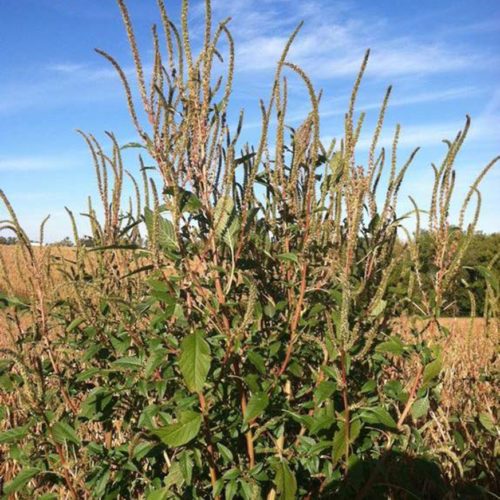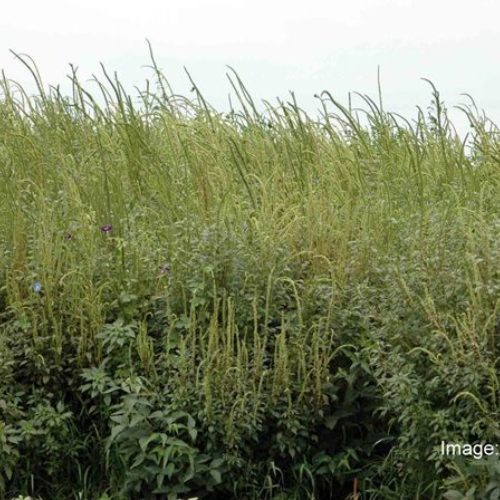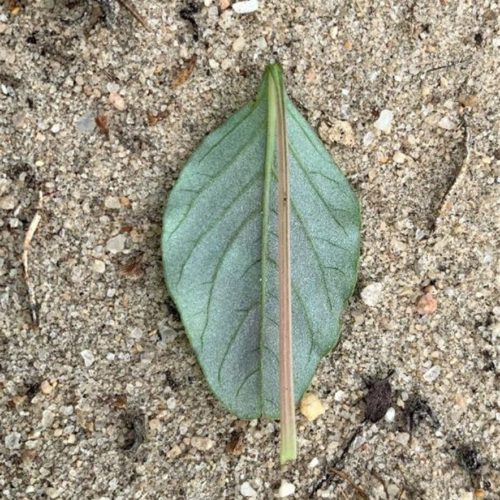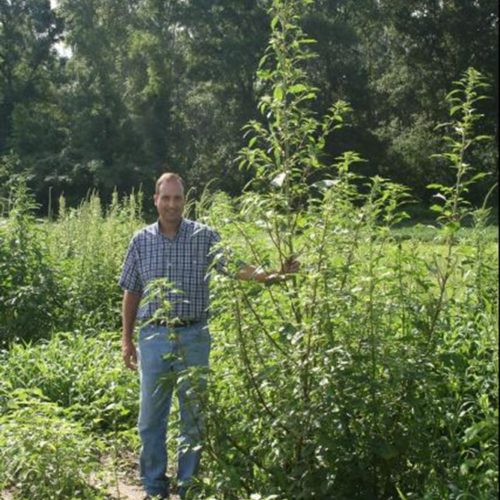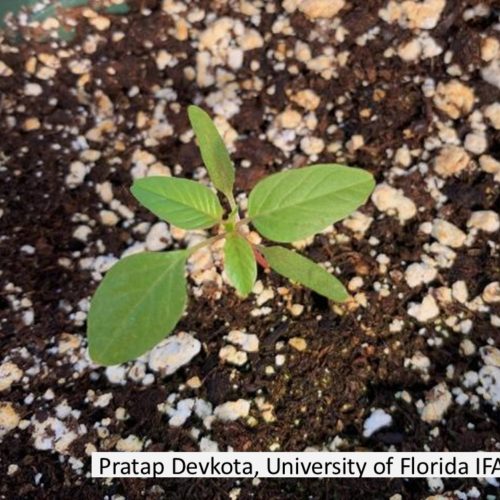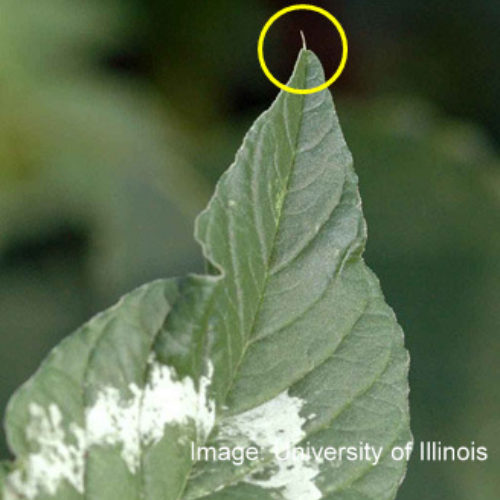Palmer Amaranth
Amaranthus palmeri

Family: Amaranthaceae
Other Common Names: Palmer's pigweed, carelessweed, dioecious amaranth, Palmer's amaranth
Weed class: A
Year Listed: 2024
Native to: Southwestern United States and Northern Mexico.
Is this Weed Toxic?:
livestock
Legal listings:
This plant is also on the Washington State quarantine list. It is prohibited to transport, buy, sell, offer for sale, or distribute plants or plant parts of quarantined species into or within the state of Washington or to sell, offer for sale, or distribute seed packets of seed, flower seed blends, or wildflower mixes of quarantined species into or within the state of Washington. Please see WAC 16-752 for more information on the quarantine list. For questions about the quarantine list, contact the Washington State Department of Agriculture's Plant Services Program at (360) 902-1874 or email PlantServices@agr.wa.gov.
Why Is It a Noxious Weed?
Palmer amaranth easily invades crop fields, especially annual crops. It can greatly reduce yield in those fields, and presence of its very small seeds in produce can prohibit that lot from being sold in many states. It is a prolific seed producer, very fast grower, and has many herbicide resistances.
How would I identify it?
General Description
An herbaceous, summer annual, Palmer amaranth can grow up to 10 feet tall, but usually 6-8 feet tall when it is not mowed. Can grow over 2 inches a day, in the right conditions.
Flower Description
Plants are dioecious, either male or female. Both make green flowering spikes that age to brown.
Female plants have spiny to sharp bracts around each small flower part. This leads the flowering spikes, made up of dozens to hundreds of flowers, to feel rough, spiny, or sharp.
Male plants flowering spike are soft to the touch, and can have copious amounts of pollen.
Leaf description
Leaves are egg-shaped to oval, with a small spine at the very tip of the leaf. They grow alternately up the stem, are hairless, and have white veins on the underside. The petiole, the stem that attaches the leaf to the main stalk, is longer than the leaf. Many Southwestern native tribes eat the leaves after cooking them.
Stem description
Palmer amaranth stems are waxy and smooth. They appear ridged, and can get a red tint or become completely red to chestnut when exposed to sun or stress.
Fruit Seed Description
Very small, round to oval, brown to maroon seeds. Female plants can make up to half a million seeds in a season. Seed can remain viable in the soil for up to 5 years. Many Southwestern native tribes eat the seed as a grain.
May Be Confused With
Many amaranths and pigweeds look very similar. Palmer amaranth leaves have a small spine on the very tip of the leaf. The petiole, the stem that the leaf grows on from the main stalk, is longer than the leaf. The leaves are hairless, and have prominent white or lighter veins on the underside.
Seeds and seedlings are not able to be IDed without genetic testing.
You can use these resources to learn how to tell Palmer amaranth apart from other amaranth species:
Where does it grow?
Open, sunny areas, such as fields, cropland, rangeland, grassland, roadsides, and disturbed sites. Very drought tolerant.
Only two infestations were known in Washington, both found and eradicated in 2023. One of which was in the Spokane area, and the other was in the Tri-Cities area. Small infestations have been found and eradicated in Idaho and Eastern Oregon. Click here to see a county-level distribution of Palmer amaranth in Washington.
How Does it Reproduce?
Is a very prolific seed producer, which have a very high germination rate, and can stay viable in the soil for up to 5 years.
How Do I Control It?
Prevention is the best method! Clean vehicles, equipment, and footwear after working in an area that may have Palmer amaranth seeds. Don't plant areas with questionable seed stocks.
Small infestations can be hand pulled or dug out.
Larger infestations will need repeated cultivation.
Mowing alone will not control Palmer amaranth, as plants will survive and just set seed closer to the ground.
Prescribed fire will kill Palmer amaranth
Most Palmer amaranths are resistant to many herbicides! Because of this, it is important to change the method of action of the herbicide you use each year or throughout a season, only coming back to a previously used chemical after multiple years.
Use the following resources to learn how to control and eradicate Palmer amaranth:
For More Information
How to identify and control Palmer amaranth, from Purdue University Extension
How to identify and control Palmer amaranth, from University of Wyoming Extension
Palmer amaranth information from USDA - NRCS
Palmer amaranth technical note from USDA


